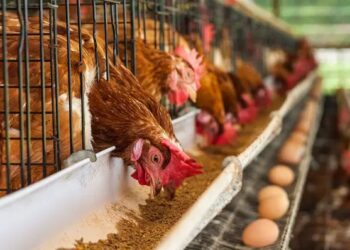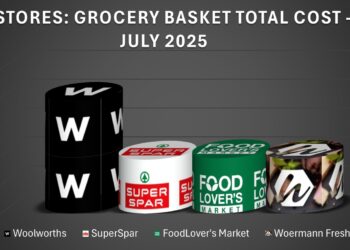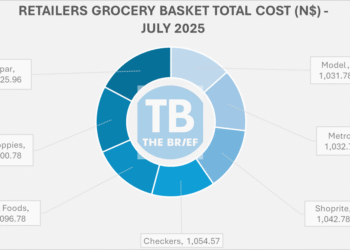
The year 2021 saw N$439.7 million being traded on the Namibian Stock Exchange’s Local board, which is the lowest in local trading dating back to 2014. The poor volumes according to Cirrus Securities, can be attributed to the lackluster domestic economy taking away the shine from listed companies.
Top performers:
Namibia Breweries was the top performing local share in 2021, up 48.8% as the share rallied in November on the prospects of merger news with Heineken and Distell, with the likelihood of a significant special dividend should the transaction be successfully finalized.
FirstRand Namibia rated 2nd in terms of performance, up 28.0%. The performance was on the back of a steep decline in 2020 following a COVID-19 selloff, which saw its shares closing down 31%. This, together with a strong rebound in company fundamentals, saw headline earnings per share increasing 17.9% in FY21, implying that the share is attractively valued, hence the increase in its share price.
Paratus Namibia continued to deliver consistent returns, up 11.1% for the year, with the company continuing to make groundbreaking investments into fibre, data-centers and the Equiano landing station and branch, creating optimism around future prospects for the company.Â
Worst performers:
Oryx Properties was the worst performing share on the local exchange, down 35.8% in 2021. The decline in the share price was on the back of prolonged negative effects that COVID-19 had on the property sector, structurally changing consumer habits making investors ask where to from here.
Letshego Holdings Namibia traded lower by 26.3% in 2021, following Environmental, Social and Governance (ESG) concerns around the company, being a leader in the Namibian microlending space, resulting in institutional fund managers selling their shares.
Standard Bank Namibia traded down by 11.1% in 2021, with the market nervous about the quality of the bank’s loan book, carrying some loans that have been non-performing pre-COVID and being exacerbated by the pandemic.Â
Most traded:
FirstRand Namibia was the most actively traded local share, with N$123 million exchanging hands in 2021.
Paratus Namibia was the 2nd most active share at N$113.2 million, followed by Namibia Breweries at N$92.7 million.Â
Â
Cirrus Securities’ Prospects and outlook for 2022
Our most preferred stock on the NSX is Letshego Holdings Namibia. ESG concerns around the company, being the leader in the Namibian microlending space, has seen institutional fund managers sell the share, with it currently trading at 195cps, from a high of 405cps back in 2017. As a result, the company is trading on a PE of 2.8x, PB of 0.4x and a dividend yield of 15%. Recent funding obtained from the International Finance Corporation with the objective of funding low to middle income housing, will enable the company to leverage its banking license and turn around the ESG concerns.
Also the recent focus of management on optimizing its ungeared balance sheet and focus on return on equity, can possibly see a special dividend declared over the medium term. This will allow the company to trade closer to intrinsic value of 333cps over short-term and NAV of 595cps over the medium term.Â
Paratus Namibia Holdings – ICT Company – Only listed Namibian company that grew earnings y/y through COVID. Paratus is also building a Datacenter outside of Windhoek, with Google as an anchor tenant, that will be completed in Q3 of CY ’22. Furthermore, they are the landing partner for Google’s Equiano undersea cable that is expected to also be operational from Q3 2022. Lastly, they are the Fiber market leaders in Namibia, currently signing up around 200 new subscribers a month. They are also rolling out their products and services in the North of Namibia where a large part of the population lives but is yet to be connected to broadband.Â
Capricorn Group Ltd – A bank, microlender and investment company – CGP owns Bank Windhoek in Namibia, Bank Gaborone in Botswana, Entrepo (second largest microlender) in Namibia and owns 30.0% of Paratus Group (ICT company with a presence in 28 African countries). The Company also disposed of the loss-making Cavmont Bank in Zambia which will have a positive impact on its earnings. Although the Company is trading close to fair value, the diversification benefits are evident and all of its segments are profitable and should continue to grow going forward. While banks are always a favorite, given the Namibian economy, we would favor exposure to a Group with a range of segments. Management reiterated in the past that they would like to improve its ROE’s and thus we expected higher dividend payments going forward.
Â
Simonis Storm Securities’ Prospects and outlook for 2022
We are hopeful for the year ahead, our economics department forecast real gross domestic product (GDP) of 2.5% for 2022. The banking sector, cyclical, is very much dependent on the performance of the economy.
Having said that, we can see them outperforming this year, their loan books remain resilient and overprovided. This means that one can expect less provisioning or even the reversal thereof given defaults not coming to fruition as previously expected. This should boost the bottom line and possibly investors pockets alike.
Namibia Breweries, definitely a profitable company in terms of margins, but there is a cloud of uncertainty lingering around them with the Heineken N.V. intend to acquire:
- their 25% stake in Heineken South-Africa
- O&L’s controlling 50.01% share in NBL
- Majority shareholding in Distell (South Africa & Namibia). We remain cautiously optimistic.
Oryx Properties is likely to gain from an economic recovery, however will require some changes in terms of securing future revenue streams. Management assured us that they are ready to make them and focused on long-term growth prospects.
Finally, there is global stock market optimism, with Omicron seemingly not as dangerous as the Delta strain, providing further tailwinds via uncertainty alleviation and stock market performance – already evident. We are excited and looking forward to a post-pandemic environment, hopefully within the short-to-medium term, but that is the problem with the future – no one really knows.











